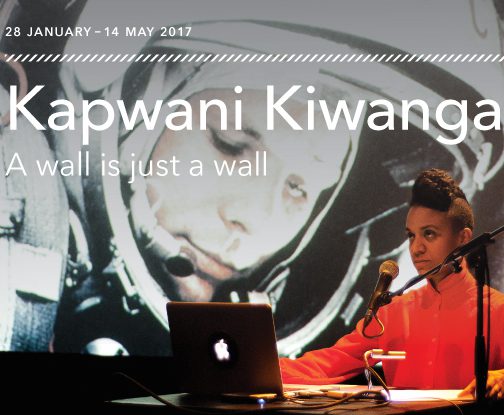The Power Plant , Toronto, Canada
28 Jan 2017 - 14 May 2017

As we go about our daily lives, we enter into and are confronted by spaces designed to shape and regulate our behaviour, whether we notice it or not. It is this architecture of control that informs Kapwani Kiwanga’s solo exhibition at The Power Plant, curated by Carolin Köchling
The most well-known example of disciplinary architecture is the Panopticon, an institutional building designed by philosopher Jeremy Bentham in the 18th century. A watchtower is placed in the centre of a rotunda of confinement cells, functioning to create a sense of constant surveillance amongst the prisoners. The architecture facilitates the intended psychological dynamic. Because the vantage point is singular—the guard in the watchtower has full view of all cells, but the prisoners are unable to see into the watchtower—it is the presumption of the guard’s watchful eye that becomes a tool for the self-regulation of the prisoners’ behaviour.
Although Bentham’s Panopticon, perhaps the most intense conception of disciplinary architecture, was never constructed, we are surrounded by structures that strive to produce similar results. The colour Baker Miller Pink is believed to reduce violent behaviour. Used for wall paint in various penitentiaries, it is meant to calm aggressive inmates. Out in the public space, fluorescent blue lights are becoming increasingly widespread; with the goal of reducing the visibility of veins on one’s arms, they aim to deter intravenous drug-users from frequenting these areas.
Though the intention of architectural decisions may be to reform or to protect, the outcome can be ambiguous, even harmful. In her exhibition at The Power Plant, Kiwanga exposes these underlying structures by placing the material mechanisms before us: the pink wall color and the blue lights. These forms often go unquestioned, as we rarely look to architecture and design as the culprits of the psychological or physiological effects they covertly produce. However, being arranged by the artist within the exhibition space renders them subject to scrutiny. Indeed, confrontation with the raw materials of these subtle yet powerful relational dynamics forces us to think about their social implications. Do the blue-lit bathrooms prevent users from injecting drugs? Or does the space now simply facilitate a more dangerous environment for doing so? And so, the question remains whether architectural attempts to control bodies and behaviours work to counter the problems they aim to prevent or merely force their relocation. Kiwanga’s gestures reminds us that as with all constraints, ways to circumnavigate them quickly emerge, and so the ageless tussle over space—that is, who can access it and who cannot—reemerges.
The artist further delves into disciplinary architecture in her new film A Primer, in which she explores the social history of the style of Dado paint (half-colored walls in interior spaces) throughout time. Part documentary, part fiction, the work offers up the potential for our built environments to predict and affect human behaviour in both the subtlest and most forceful of ways. The new commissioned film A Primer is co-produced by The Power Plant, Toronto and the Logan Center Exhibitions, University of Chicago.
.
.
Kapwani Kiwanga (born 1978 in Hamilton, Ontario) lives and works in Paris. She studied Anthropology and Comparative Religions at McGill University in Montréal before entering the Ecole Nationale Supérieure des Beaux-Arts de Paris, taking part in the program La Seine. Kiwanga carried on in the Fresnoy, Studio National d’Art Contemporain between 2007 and 2009. She has won several prizes in international festivals for her films and video projects, and was nominated twice for the BAFTA, an award given by the British Academy of Film and Television Arts. Kiwanga’s solo exhibitions include Logan Center Exhibitions, University of Chicago (2017); South London Gallery (2015); Viafarini, Milan (2015); FIAC, Paris (2015); and Galeries Nationales du Jeu de Paume, Paris (2014). Her work has been part of group exhibitions at Museum of Modern art Dublin (2015); Salt Beyoglu, Istanbul (2015); Glasgow Center of Contemporary Art (2008); Centre Georges Pompidou, Paris (2006); and Bienal Internacional de Arte Contemporáneo de Almeria (2006).